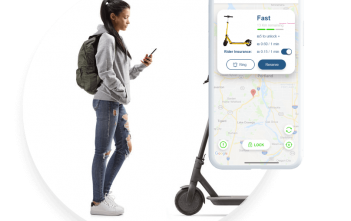One of the most difficult problems in the insurance sector is the complexity of insurance products, creating a long and complicated purchase process. Thus, until a few years ago, insurance was sold mainly by agents. The increasing presence of digital tools in recent years has resulted in the development of direct distribution channels between the insurance companies and insurers and a simplification of the purchasing processes, but there is still a need for a transfer of much information between the insured and the insurance company in order to execute the purchase.
 The connected insurance model succeeds in solving the problem and enables the insurance companies to sell insurance via simple and efficient processes, and on the other hand – allow the consumers to purchase protections for themselves easily and quickly. The model is based on the principle that the information needed for the transaction already exists at a third-party partner. The connected insurance transaction in practice rides on another transaction, using the information created and enabling the customer to purchase insurance – at the press of a button.
The connected insurance model succeeds in solving the problem and enables the insurance companies to sell insurance via simple and efficient processes, and on the other hand – allow the consumers to purchase protections for themselves easily and quickly. The model is based on the principle that the information needed for the transaction already exists at a third-party partner. The connected insurance transaction in practice rides on another transaction, using the information created and enabling the customer to purchase insurance – at the press of a button.
For example – when purchasing motor insurance all of the information about the vehicle and the customer, including means of payment, already exist in the channel between the seller and the purchaser, enabling drawing the information from there and immediately creating a price quote for purchasing insurance. This model can work in other scenarios – the rental of a car or other means of transport for a longer or shorter period, the purchase of tools or internet services and purchasing a vacation package or a flight.
The deal is a three-way one – with all parties profiting. The insurance company receives exact information enabling it to manage the risk, price it accurately and of course – acquire new customers at low costs. The connected insurance model enables the insurance company to collaborate with very big companies, with a wide customer public, which could significantly reduce the customer acquisition costs.
The insured is able to protect himself against risks arising when making the purchase, easily and efficiently.
The third-party partner is given an opportunity to give his clients ongoing added value, over and above the original product that he provides the customer with, and in addition – he receives payment (not a commission) for a transaction mediated by him.
One of the companies that operates in this area is CI, which is currently already developing the model and building new products suited to distribution on the back of other transactions. CI is entering the gap between the insurance company, the third-party partner and the insured, developing products suited to this mode of distribution and creating suitable distribution agreements with giant companies.
One of the challenges that the insurance companies need to solve on the way to accelerating this model is to make the insurance products simpler and slimmer – both in order ease the purchase process and to reduce the price and make the deal more worthwhile for the customer – and most important – to suit it to purchasing at a single click.



